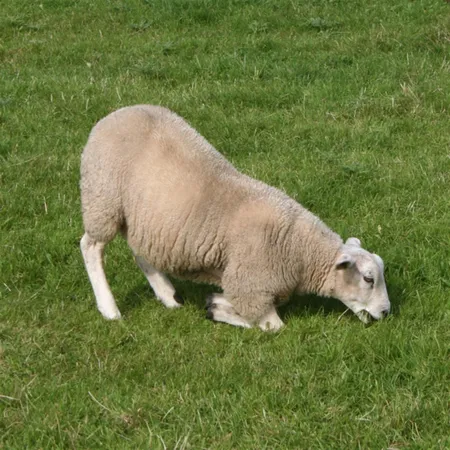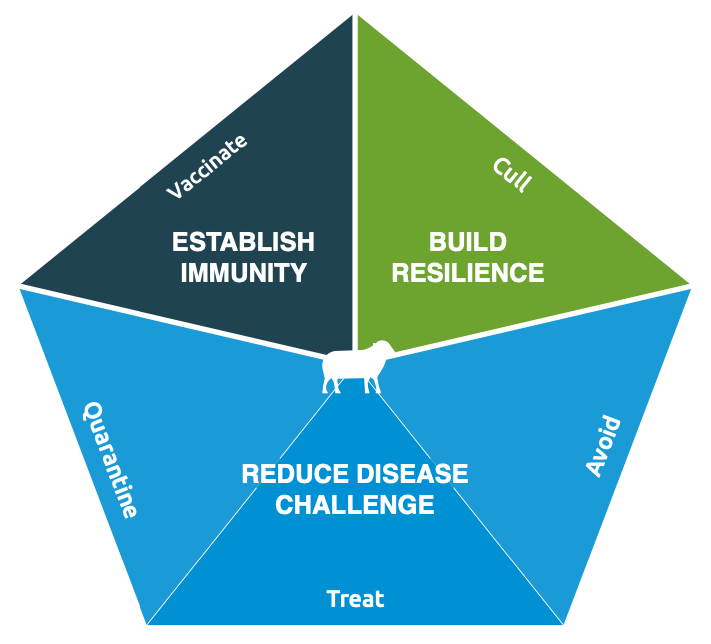Lameness
Lameness in sheep flocks is one of the most common and persistent disease problems. It is a costly condition, resulting in significant economic loss and is an important welfare concern. Lame sheep are less able to graze and compete for feed, leading to reduced performance, lower body condition score, reduced lamb growth rate, and premature culling. Additionally, the costs of treatment and the labor involved in administering it add to the burden. A flock target of less than 2% lame sheep is realistic on farms where a control plan has been discussed with a vet.

Symptoms and diagnosis of Lameness 🩺
Early Signs
The first signs of lameness can be quite subtle, but early identification and prompt treatment of individuals or groups are essential to reduce spread. Scald is usually characterized by red/pink inflammation between the toes with a white/grey pasty ‘scum’ on top, which can smell. In adult sheep, scald is early footrot, so prompt treatment is crucial to reduce spread within the flock.
Common Causes
- Scald: Red and swollen skin between the claws, covered by a thin layer of white discharge. It causes severe temporary lameness but sheep become sound one to two days after appropriate treatment.
- Footrot: Extremely painful, causing sheep to lie down for long periods and may not bear weight on the affected leg. There is swelling and moistening of the skin between the claws with a characteristic foul-smelling discharge.
- Contagious Ovine Digital Dermatitis (CODD): Severe lameness typically affecting one claw of one foot with reluctance to bear weight. Small ulcers develop at the coronary band, which can become so severe that the whole hoof capsule detaches.
How to treat Lameness in sheep 💊
When lame sheep are identified, it is important that they are isolated and treated appropriately as soon as possible, ideally within three days. This reduces the spread of infection to other sheep and speeds up recovery time. Treatment for adult sheep requires the prompt use of injectable and topical antibiotics alongside anti-inflammatory pain relief. The procedure for using antibiotics in lame sheep should be discussed with your vet as part of your flock health plan.
Specific Treatments
- Scald: Individual cases can be treated using antibiotic aerosol sprays. For several affected animals, treating all sheep in the group in a 10% zinc sulphate solution or 3% formalin in a footbath usually provides effective control.
- Footrot: An injection of long-acting oxytetracycline into the muscle, removal of any debris from the interdigital space, and use of an antibiotic spray. Most sheep recover from lameness within a few days.
- CODD: Parenteral long-acting oxytetracycline (10 mg/kg) and a NSAID, with skin lesions treated topically with oxytetracycline aerosol. Other antibiotics such as long-acting amoxicillin have been used successfully.
How to prevent Lameness in sheep 🛡️
Effective measures to prevent lameness are crucial once there are lame sheep. Easy-to-use and appropriate handling facilities are necessary to make foot care effective and practical. Foot health, including shape, horn quality, and susceptibility to footrot, may be inherited, so it is important to select breeding stock with sound feet.
Five Point Plan
The Five Point Plan is a recognized industry standard, useful in controlling lameness caused by infections and helps to prevent new cases. The elements work together to control lameness by:
- Avoiding the spread of infection (in gateways, at gatherings).
- Treating lame individuals quickly and effectively.
- Quarantining bought-in sheep for three weeks.
- Culling persistently lame sheep.
- Vaccinating to protect the flock by boosting immunity to footrot bacteria.
Additional Tips
- Ensure good biosecurity to prevent introducing CODD onto the farm. All purchased sheep must be quarantined for at least one month.
- Avoid foot trimming as it can cause bleeding and lead to the formation of granulomas, which are difficult to manage and very painful.


